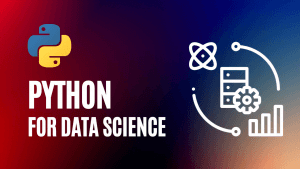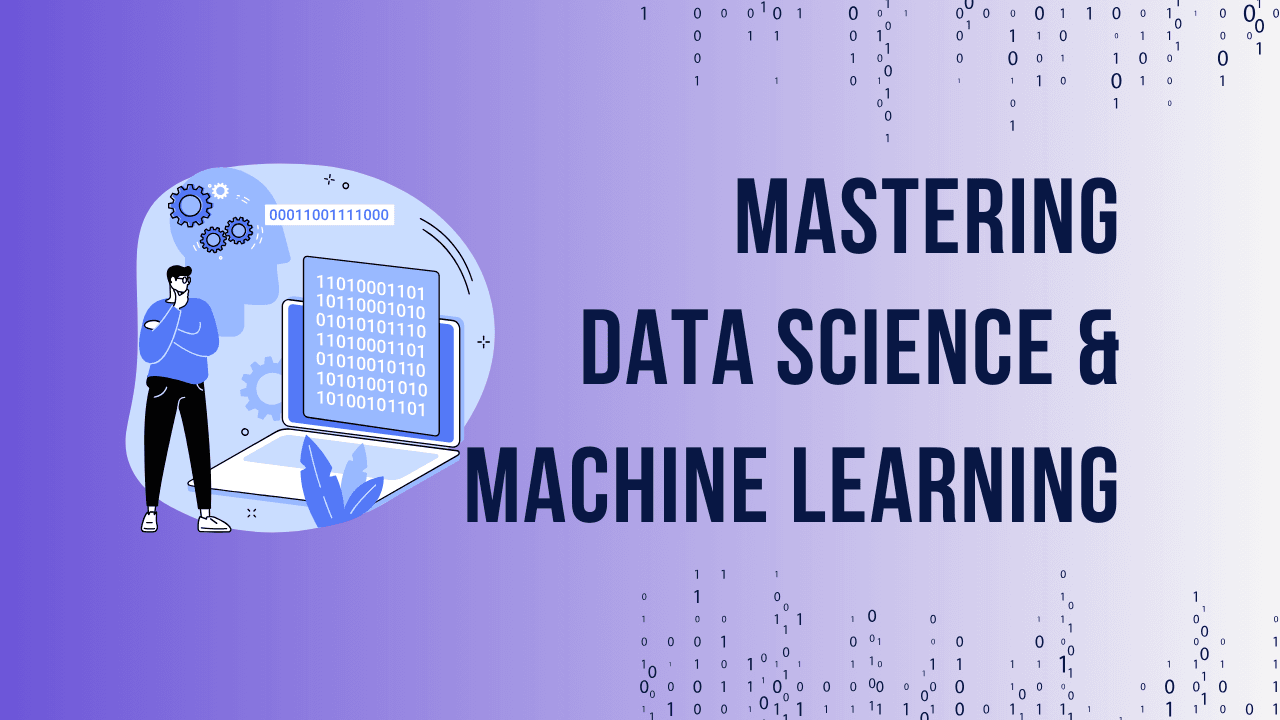Introduction
In the rapidly growing field of data science, choosing the right programming language to learn can make all the difference. Python, with its simple syntax and powerful libraries, has become the go-to language for aspiring data scientists. This article will explore why Python is the first language you should learn if you want to excel in data science. We will cover its ease of use, versatility, and the specific advantages it offers for data science and machine learning.
Ready to take your data analysis skills to the next level? Check out our comprehensive Python for Data Science Course!
Why Python is the Ideal Language for Beginners
Easy to Learn Syntax
One of the main reasons Python is recommended for beginners is its easy-to-understand syntax. Python’s syntax is designed to be readable and straightforward, making it easier for beginners to grasp programming concepts without getting bogged down by complex rules.
Strong Community Support
Another advantage of learning Python is the extensive community support available. Whether you’re a beginner or an experienced programmer, you’ll find a wealth of tutorials, forums, and online resources that can help you solve problems and continue learning.
Extensive Libraries and Frameworks
Python boasts a wide range of libraries and frameworks that can significantly reduce the time and effort required to build data science projects. Libraries like Pandas, NumPy, and Matplotlib are essential tools for any data scientist, making Python a natural choice for those entering the field.
Ready to take your data analysis skills to the next level? Check out our comprehensive Python for Data Science Course!
Python’s Role in Data Science
Python’s Versatility in Data Science
Python is incredibly versatile and can be used for everything from data cleaning to complex data analysis. This flexibility allows data scientists to use a single language throughout their workflow, making it easier to manage and maintain projects.
Key Libraries Used in Data Science
Python’s ecosystem includes several powerful libraries specifically designed for data science. Pandas, for instance, is perfect for data manipulation, while NumPy is ideal for numerical computations. Matplotlib and Seaborn provide excellent tools for data visualization, enabling data scientists to create insightful graphs and charts.
Python for Data Analysis
Python’s ability to handle large datasets and perform complex calculations makes it a strong contender for data analysis. With Python, you can quickly analyze vast amounts of data, uncovering trends and insights that can drive business decisions.
Python and Machine Learning
Why Python is Preferred in Machine Learning
Python’s simplicity and the availability of machine learning libraries make it the preferred choice for machine learning projects. Its readability allows developers to focus on solving problems rather than writing complex code.
Python Libraries for Machine Learning
Python’s machine learning libraries, such as Scikit-learn, TensorFlow, and Keras, offer powerful tools for building and deploying machine learning models. These libraries provide pre-built functions and modules that can be easily integrated into your projects, saving time and effort.
Building Machine Learning Models with Python
With Python, you can build, train, and deploy machine learning models with minimal code. The language’s ease of use and the availability of machine learning frameworks make it accessible even to those new to the field.
Comparing Python with Other Programming Languages
Python vs. R
While R is also popular in the data science community, Python’s general-purpose nature makes it more versatile. Python can be used for web development, automation, and more, making it a more comprehensive language to learn.
Python vs. Java
Java is a powerful language, but its complexity can be a barrier for beginners. Python’s simplicity makes it easier to learn and use, especially for data science applications.
Python vs. MATLAB
MATLAB is a specialized language used primarily in academia and engineering. While powerful, it lacks the flexibility and community support of Python, making Python a better choice for those looking to work in data science.
Getting Started with Python for Data Science
Choosing the Right Python Tutorials
There are numerous Python tutorials available online, catering to different learning styles and experience levels. When selecting a tutorial, look for those that focus on practical applications in data science, such as data manipulation and analysis.
Setting Up Python Environment
Setting up your Python environment is the first step to getting started with Python for data science. Tools like Anaconda and Jupyter Notebook are popular choices that provide everything you need to start coding in Python.
Basic Python Concepts to Master
To succeed in data science with Python, it’s essential to master basic Python concepts such as loops, functions, and data structures. These foundational skills will make it easier to tackle more complex topics like machine learning and data analysis.
Conclusion
Python’s simplicity, versatility, and robust community support make it the ideal first programming language for aspiring data scientists. Whether you’re interested in data analysis, machine learning, or any other aspect of data science, Python provides the tools and resources you need to succeed. Start learning Python today and take the first step toward a rewarding career in data science.
Ready to take your data analysis skills to the next level? Check out our comprehensive Python for Data Science Course!
Frequently Asked Questions (FAQs)
1. Why should I learn Python for data science?
Python is a versatile programming language with a simple syntax that is easy to learn. It has extensive libraries and frameworks specifically designed for data science, making it the preferred language in the field. Whether you’re performing data analysis, building machine learning models, or visualizing data, Python offers the tools you need to succeed.
2. Is Python the best programming language for beginners?
Yes, Python is widely considered the best programming language for beginners due to its readability and straightforward syntax. It allows beginners to focus on learning programming concepts without getting overwhelmed by complex syntax rules.
3. Can I use Python for machine learning?
Absolutely! Python is the most popular language for machine learning, thanks to its powerful libraries like Scikit-learn, TensorFlow, and Keras. These libraries provide pre-built functions that make it easier to develop and deploy machine learning models.
4. How long does it take to learn Python for data science?
The time it takes to learn Python for data science depends on your background and the amount of time you dedicate to learning. On average, you can expect to become proficient in Python for data science within 3 to 6 months if you study consistently.
5. What are the key Python libraries I need to learn for data science?
Some of the essential Python libraries for data science include:
- Pandas: For data manipulation and analysis
- NumPy: For numerical computing
- Matplotlib and Seaborn: For data visualization
- Scikit-learn: For machine learning
Ready to take your data analysis skills to the next level? Check out our comprehensive Python for Data Science Course!



